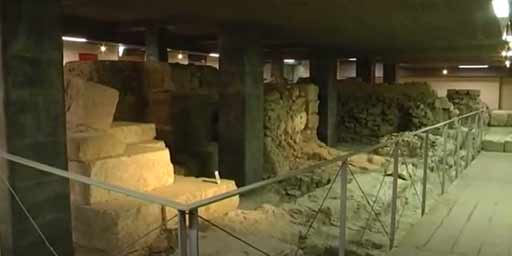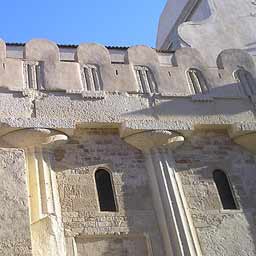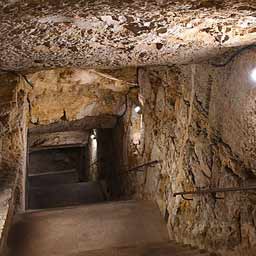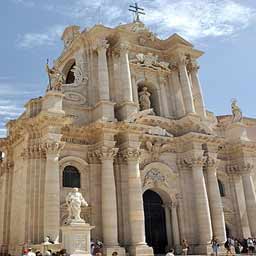Artemision of Syracuse

The Artemision of Syracuse , or the Ionic temple dedicated to the goddess Artemis , was discovered by the archaeologist Paolo Orsi in 1910, in an area strongly characterized by the presence of numerous ancient sacred buildings.
The Ionic temple dedicated to the goddess Artemis, dated to the end of the sixth century. BC, is located in the basement of Palazzo Vermexio , the current seat of the Town Hall.
The Access Pavilion to the excavations of the Ionic temple fills the void left by the demolition of the Church of San Sebastianello. The Pavilion was designed by the architect Vincenzo Latina, and is conceived as a "monolith" of hard limestone, generated by the "magnetism" of the underground remains of the Ionic temple and the adjacent Athenaion. The interior of the pavilion is characterized by a strong plastic movement, and is characterized by the penumbra, the light that filters through a large lantern becomes a light chamber on the excavations. The contemporary structure relates to the contiguous Garden of Artemis conceived as an offering to the goddess of fertility, Artemis, protector of the woods and nymphs. The Garden offers the viewer a wide variety of flowers and plants that evoke suggestions related to mythology.
The various excavation campaigns have brought to light architectural elements and archaeological materials from different eras, but above all the foundation structures of this grandiose building: the area was born as a real area of worship in the Greek age , a period in which animal sacrifices and votive statuettes were offered to pagan divinities, as evidenced by the numerous bone fragments found inside the excavation area. Later it was built on it, starting from the sixth century BC. C., the temple of Artemis, the only example in Ionic style in all of Sicily, probably remained unfinished.
The temple was 59 meters long and 25 meters wide, with six columns on the two front parts and 14 along the sides. The entrance to the building, the pronaos, faced the East. The presence of a naòs is not evident, but that of an open sekos, while the peristyle was covered with terracotta tiles, the ends of which were adorned with elegant polychrome figures.
The columns of the Artemision take the peculiarities as a model. architectural features of the famous temple of Artemis in Ephesus, Turkey. Similarly, the bases on which the columns rest show stylistic affinities with the temple of Hera at Samos in Greece. This is because Syracuse was the most important commercial and political center in the Mediterranean and attracted workers from the various colonies of the kingdom. The last archaeological evidence dates back to the late Middle Ages: the Putridarium , or the underground crypt of the Church of San Sebastianello. To accompany the soul of the deceased from earthly life to the afterlife, the brothers practiced the rite of the "double funeral" or the pitiful care of the body during its decomposition and burial.


